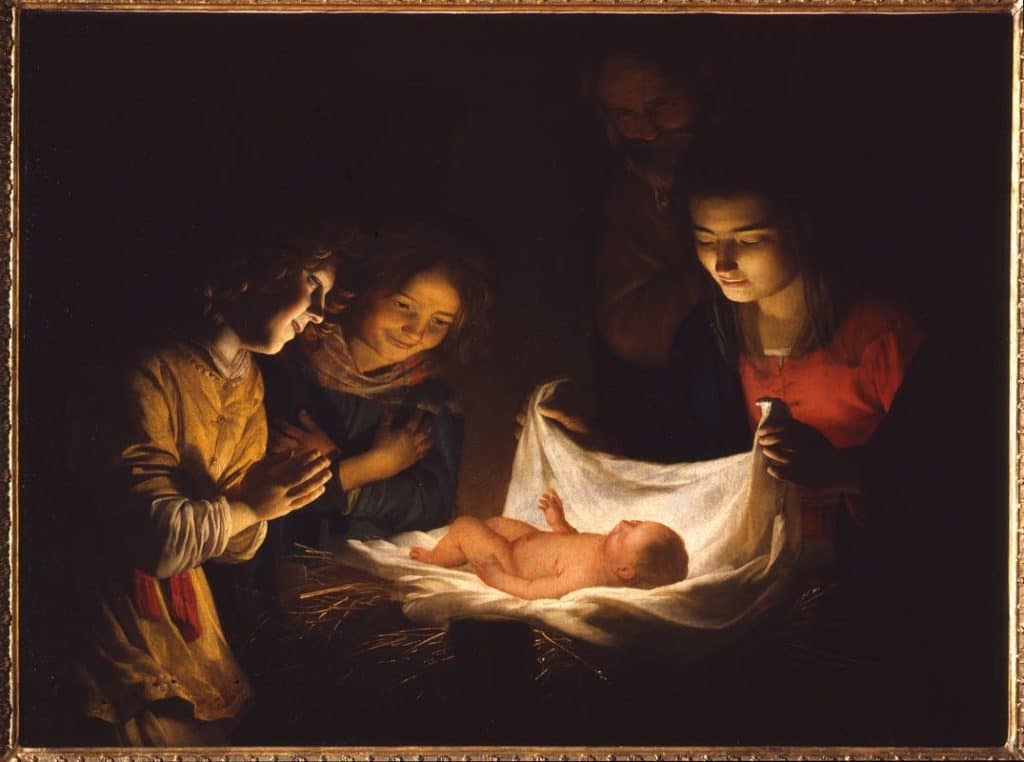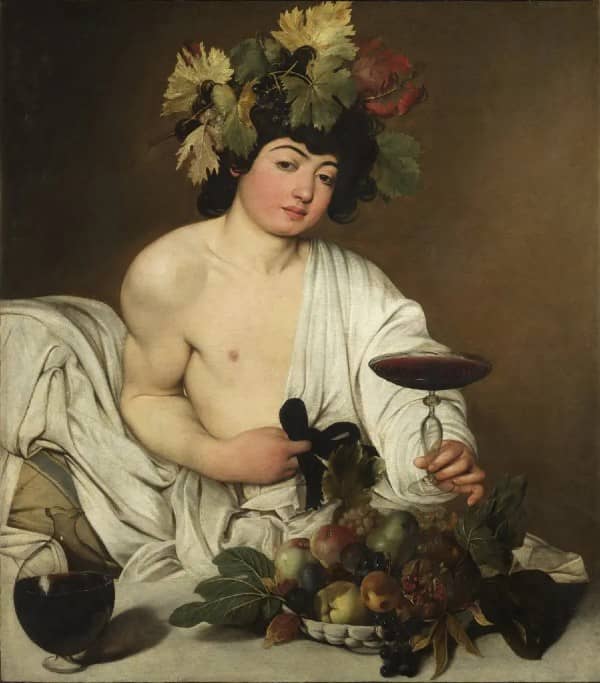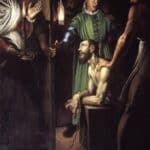Caravaggio and the Caravaggeschi
Caravaggio, born Michelangelo Merisi (1571-1610), was undoubtedly one of the most important personalities in the history of art, at the turn of the sixteenth and seventeenth centuries.
An artist with a somewhat troubled biography, his artistic career was condensed over twenty years, covering some of the main Italian cities (Milan, Rome, Naples, Palermo) and reaching as far as Malta. If Caravaggio was in great demand and appreciated as an artist, his impetuous temperament often led him to be the protagonist of fights and violent episodes, one of which resulted in the death of his rival, with the consequent death sentence and the need to escape from Rome.
His art is characterized by a highly realistic representation, with great attention to the natural datum.
The protagonists of his works are in fact taken from models well known to him, men and women of his contemporaneity, whom he met in the places he frequented in everyday life.
At the same time he pays particular attention to the popular representation of the peasants, representatives of the lower classes. Often the characters depicted are elderly with their faces marked by work and time, when they turn their backs to the observer they show their feet dirty with earth in the foreground. But attention to the natural datum for Caravaggio also turns into an accurate consideration of the luministic datum. In Caravaggio’s work, the contrasts of light are remarkable, with the light source often external to the scene striking the characters, making them stand out against the very dark, almost black backgrounds.

Although he did not have his own school or workshop with students, as was canonically understood, the strength of his art was such that many artists approached his production and let themselves be inspired by it.
In fact, Caravaggio became the bearer of a new way of painting, with a strong theatrical impact, in contrast with the classicism of other artists of those years, including Guido Reni or the Carraccis. The representation of reality and the infinite pictorial possibilities that the study of light offered were made their own and experimented with by painters who had come into contact with Merisi’s art. In fact, a large group of Caravaggesque artists find themselves in Naples, a city that hosted ours for several months and on several occasions, and which therefore offered various opportunities to ensure that their art was known and “metabolized” by the artistic personalities of the Neapolitan city. The artists of the south, in particular, proved to be sensitive to the reception of the most popular representation, often making the poorest and most emaciated figures of society the protagonists of their works. Among the most famous “Roman” followers were Orazio and Artemisia Gentileschi, but also a large group of foreign painters, who passed through the capital, approached the works of Caravaggio.
Among these, in particular, the Flemish drew and developed the Caravaggesque style adapting it to the Nordic vision, characterized by a wealth of details and
the representation of details typical of the painting of Flanders. Even the inclusion of the episodes in known everyday contexts, such as crowded taverns with gamblers or interiors with laden tables and the presence of animals, already found a particular adhesion in Northern European production. But the attention to light and the possible multiple results that could be obtained in the paintings was particularly appreciated by the artists of this area. Here the natural, raw, cold and sharp light of Caravaggio, coming from a source external to the framed scene, is transformed into a warmer light whose origin is often internal. In particular, it originates from candles or torches, with a pretext placed at the center of the scene and around which the protagonists of the depicted episode are located, which therefore are illuminated on one side, while the opposite part is strongly in shadow, which can only be guessed through a vague silhouette that often becomes indistinguishable from the background.
Among the best known Caravaggesque artists is Gerrit van Honthorst (1592-1656), subsequently Italianized and now known as Gherardo delle Notti, among the first to bring, precisely, the light source inside the painting. This characteristic became peculiar, so much so that it was frequently found in Flemish paintings and became a real distinctive feature. This element was also taken up by the French Caravaggesques, first of all Georges de La Tours (1593-1652).


Therefore, if they cannot be indicated as belonging to a real school, the so-called Caravaggeschi took Caravaggio as their teacher and ideal model.
Indeed, perhaps the very fact that they were not active in an organized workshop made it possible for Merisi’s style to be elaborated and done so deeply by those who referred to him.
Precisely because of his strongly anti-academic attitude and the crude representation of reality, Caravaggio’s critical fortune had a whirlwind descent from the years immediately following his death.
The oblivion and the lack of consideration that struck him in the following centuries were interrupted only in the mid-twentieth century, when thanks to scholars of the caliber of Roberto Longhi (1890-1970) he was rediscovered, emphasizing instead the importance that his works had had in the art not only of his contemporaries, but also in that of subsequent generations.




